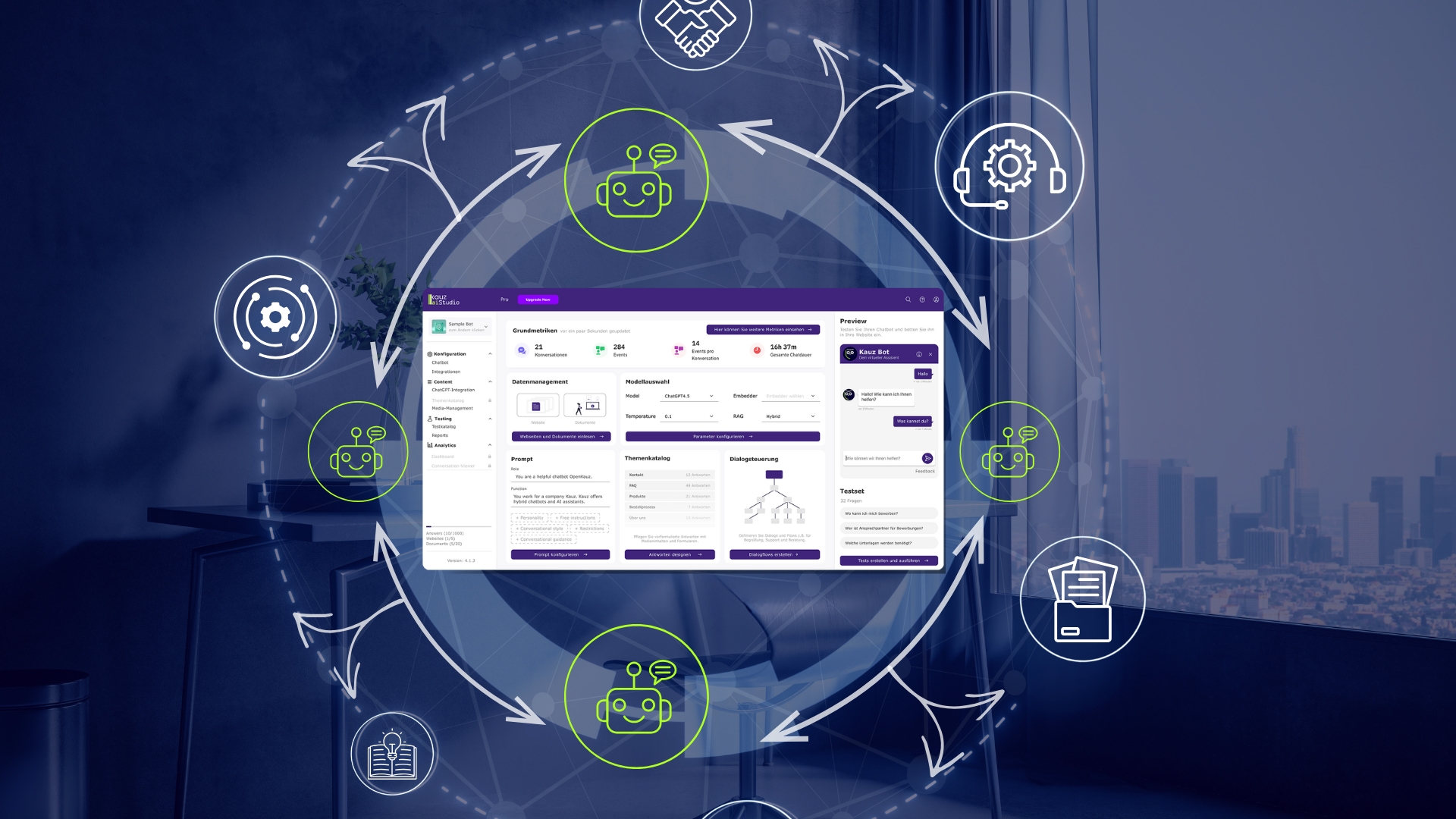
RAG was just the beginning
For many companies, the entry point for generative AI is knowledge management. Answering customer queries automatically and making knowledge from internal wikis and documents findable for employees is possible with technologies such as Retrieval Augmented Generation (RAG) can be realized. RAG is particularly well suited to making generative AI usable for individualized content, as existing knowledge can be easily read in and answers can be formulated precisely to the user’s question. However, RAG reaches its limits in more complex use cases, as it only retrieves and reproduces existing content. RAG agents are also often strictly trained to only use the content provided in order to avoid misinformation or so-called “hallucinations”. With tasks such as consulting, systematic data collection or the analysis of correlations, this approach proves to be too limited.
Rapid AI evolution: multi-agent systems
Kauz.ai therefore goes beyond the classic RAG agent: with the aiStudio you can effectively develop your first multi-agent systems develop. The platform provides out-of-the-box specialized agents for different use cases with individual settings and tools that can be combined as required.
Examples of website wizards
- RAG agent for knowledge databases: The classic RAG agent remains in place and answers questions based on the imported knowledge database.
- Data acquisition agent: When a user wants to report a claim, this agent comes into play. It asks the user questions one after the other, uses information from the context of the conversation and adapts to the user’s individual needs. Compared to traditional online forms, the bounce rate is much lower. The agent is also connected to external tools such as an email inbox or a claims system, to which it forwards the collected data .
- Product consulting agent: This agent steps in when a potential customer is identified. It knows the product data sheets, can create flexible comparisons between products and make a customized product recommendation. It can also work with a price calculator or transfer the data to a consultant to start a quotation process.
There are many possible applications: Training consultant, troubleshooter, event planner – There are no limits to creativity. These agents work together flexibly, as needed, and can be customized based on instructions, available data, tools and the underlying language model.
Examples of internal AI agents
The use cases are also expanding within the company:
- SQL agent: This agent performs data analysis by making queries to the sales database and creating reports.
- Claims assistant: It helps with the classification of claims inquiries and compares them with product data sheets.
- Onboarding agent: New employees can use this agent to complete training and simulate work situations.
- Troubleshooting assistant: Employees can use this agent to solve technical problems themselves or forward them to the IT department in a qualified manner.
On our Product Roadmap 2025, the further expansion of available agents is at the center of our development work.
Outlook
The agents lay the foundation for the AI workplace: In addition to central assistants for the company or the specialist department, the personal AI assistant to reality. This assistant can support or automate complex tasks, such as analyzing and replying to emails or creating reports. Employees therefore benefit from an individual digital assistant that makes their daily work easier.
The future of the working world will be shaped by these flexible multi-agent systems more dynamic, efficient and personalized.

